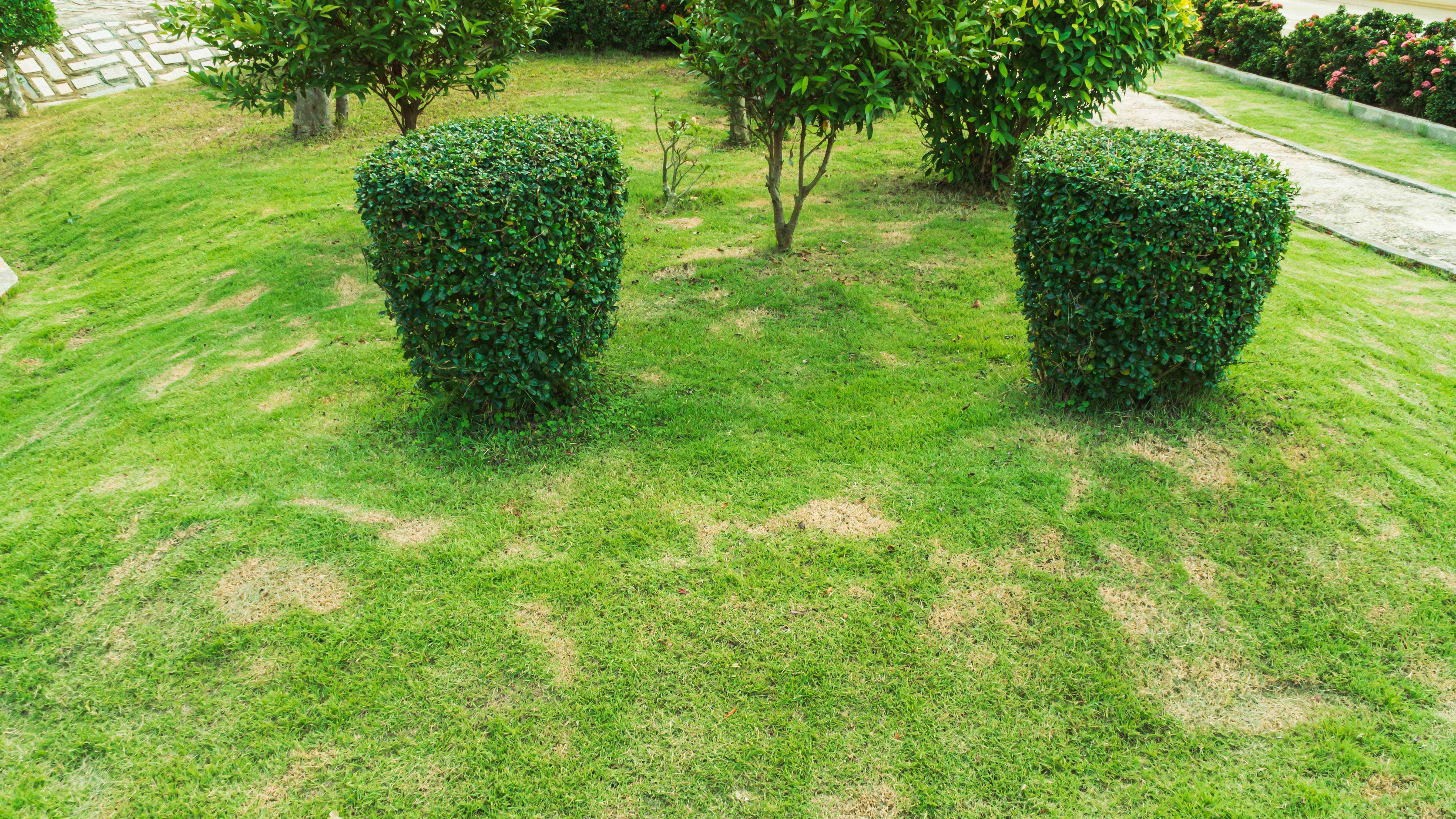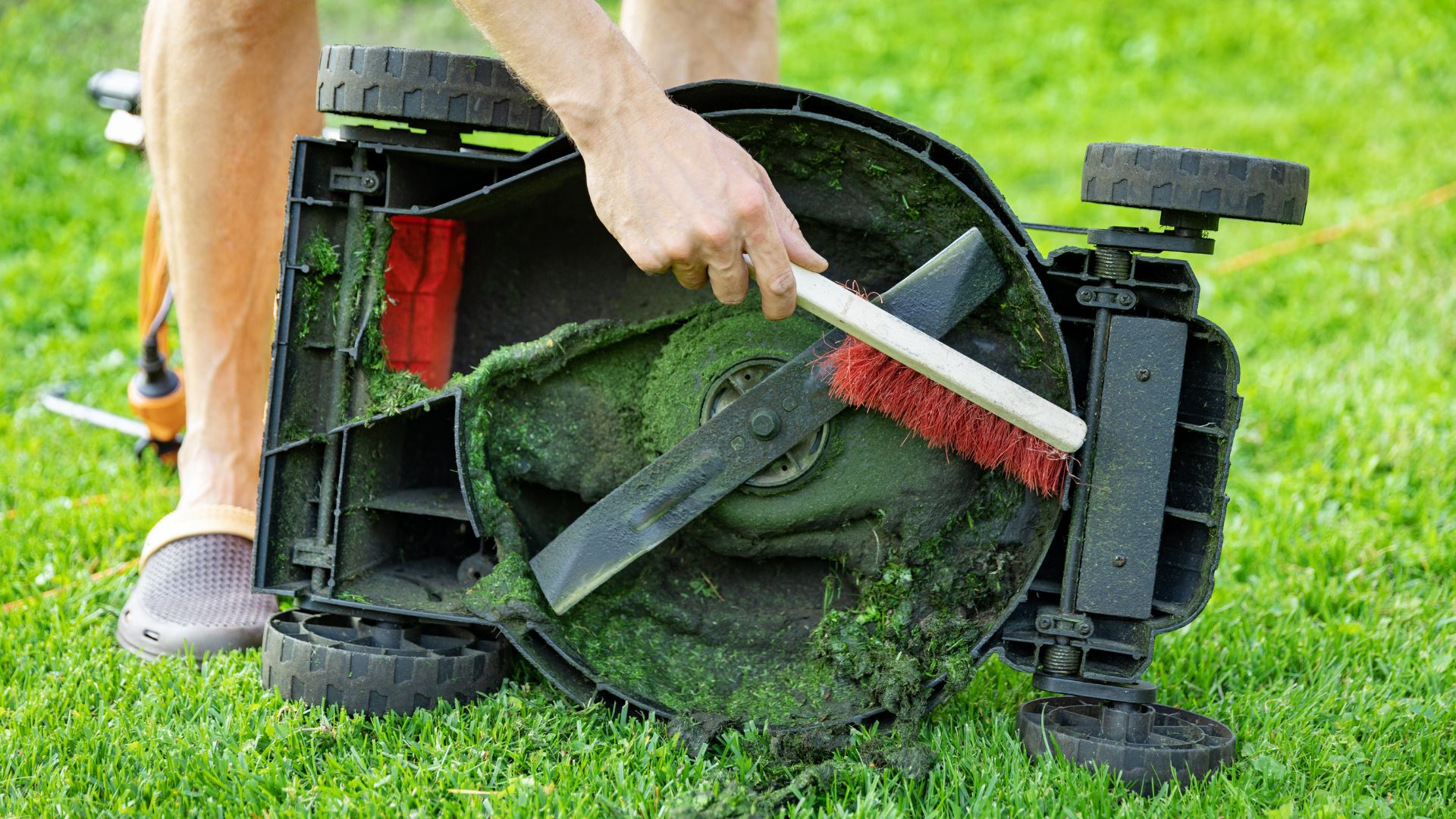Can you cut wet grass? Here's how it could affect your lawn, and your mower
5 reasons why it's a bad idea

It’s important to maintain a consistent lawn mowing schedule if you want your lawn to look its best throughout the summer. Mowing keeps the grass at a healthy length and ensures that it grows in an even, manageable way, while removing any unwanted debris. Despite this necessity, it can be tricky to find the time to mow since it’s a time-consuming chore that needs to be done in socially acceptable hours! But there’s another complicating factor: the weather. While mowing your lawn often is important, mowing wet grass can actually do more harm than good.
While mowing a wet lawn isn’t impossible, it’s not recommended. Wet grass behaves differently than dry grass when cut and therefore creates new problems. Not only will the overall look be unsatisfactory but cutting wet grass can end up damaging your lawn and your mower, with the potential for injury as well. Even if you don’t see these results after a single mowing session, don’t let that fool you. Here are five ways that repeated mowing of a wet lawn will increase your risk of long-term damage to your yard and your tools.
The Risks of Mowing Wet Grass
1. The spread of disease

If you're wondering how to get rid of brown patches in your lawn, wet mowing is one thing to consider. Wet weather encourages the breeding of fungus and other diseases, as they enjoy the damp conditions. When you mow a wet lawn, the grass gets churned up and deposited throughout the lawn in the form of clippings. If those clippings are infested with disease, they can spread the disease around your yard and make it much harder to treat.
Even if they’re not yet infected, these sodden clippings are a very appealing habitat and help to attract disease. Some of the more common diseases to look out for include brown patch disease and leaf spot disease.
2. Unevenly cut grass

You’ll be left with an unevenly cut lawn that looks messy and poorly maintained
Wet grass doesn’t stand up straight the way that dry grass does. The weight of the water on the blades can force them to bend, which means they won’t stand at a uniform height. When you pass the mower over the grass, it won’t catch all of the grass or cut the grass stalks at the same level.
When the grass dries and stands upright again, you’ll be left with an unevenly cut lawn that looks messy and poorly maintained, which is one of the most common lawn care mistakes you can make. You’re also more likely to tear the blades, rather than neatly slicing them, which can look ragged and also pull up clumps of soil in the process.
3. Clogged, damaged mowers

Wet grass clumps and can cause clogs inside the mower. This makes the blades work less effectively and can cause them to overheat, as they’ll need to push harder to get through the clumps. This can cause long-term damage and make your mower break down, forcing you to replace it before its time.
Get instant access to breaking news, the hottest reviews, great deals and helpful tips.
These wet clumps of grass can also leave behind harmful moisture, which will corrode the metal blades and motor. Over time, these parts will require repairs or replacements.
4. Slipping and injury
This is particularly true if you have an electric mower
It is much more likely that you or your mower will slip on wet grass than on dry grass. While the fall itself may not injure you, falling or losing control of a large tool like a mower can be very dangerous. The mower could cut you, damage your lawn or wreck another part of your garden.
If you do mow wet grass, this is one of the reasons not to buy an electric mower, as these can travel quite far when left unattended and even cause an electric shock when exposed to water.
5. Smothered grass

A wet lawn is more vulnerable to compaction, especially when you’re rolling a heavy lawn mower over the surface of the soil. As the soil compacts, it restricts the amount of oxygen that circulates around the grass roots, which is bad for the health of the plant.
On top of that, when the mower deposits its grass clippings, clumps of wet grass can create a layer on top of the soil that prevents air circulation, water absorption and sunlight from penetrating through to the roots.
More from Tom's Guide

Despite making her home in urban metropolises, Madeleine Streets has been nurturing a green thumb for decades.
Raised by a garden designer, she is putting that childhood education to use by helping others learn how to make their garden bloom, while filling her own New York home with cat-friendly plants.
When not writing about gardening and the outdoors, Madeleine loves to cook, study wine and borrow books from her local library.
 Club Benefits
Club Benefits





